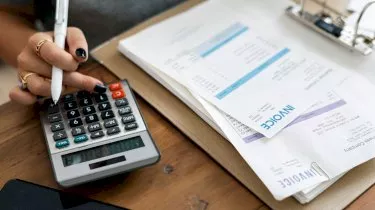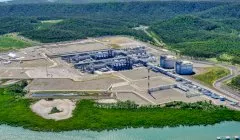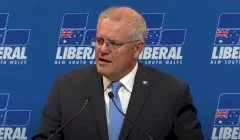Invest
Debts, hardship plans for energy bills jump
The Energy Regulator’s annual report has found that electricity and gas debts have increased, while the number of people on hardship programs and being disconnected continues to rise.
Debts, hardship plans for energy bills jump
The Energy Regulator’s annual report has found that electricity and gas debts have increased, while the number of people on hardship programs and being disconnected continues to rise.

The Australian Energy Regulator has drawn attention to the rising levels of energy debt and individuals being placed on hardship programs.
According to the regulator’s end of year report, although the number of customers incurring debts has declined over the 2017-18 financial year, the size of the debts acquired is increasing.
This has coincided with a rise in disconnections over the year to date.
127,720 (or 2 per cent) of electricity residential customers and 58,498 (or 2.8 per cent) of gas residential customers experienced debt this year.

Although this signifies a decrease in the number of customers in debt compared to last year, the average debt rose significantly to between $730–$1,525 and $400–$630, respectively.
This is up from between $500–$830 for electricity and $320–$440 for gas in the 2016-17 financial year.
“While there are less customers repaying debt, the amount of debt those customers are paying is increasing, which signals that electricity is less affordable for some,” the report stated.
The report found that more than half of all electricity payment plans and half of all gas repayment plans were cancelled during the year, suggesting customers in debt are failing to make payments in the required time frames.
Alongside this, the majority of states and territories saw an increase in the number of customers on formal hardship programs over the year.
Only Queensland and NSW did not see an upsurge.
In 2017-18, 68,832 (1.1 per cent) of electricity customers and 13,701 (0.7 per cent) of gas customers are on hardship programs.
This indicates the number of electricity customers on hardship programs rose by 30,000 in the year, while gas customers in hardship programs increased by 43,000.
The average debt on entry into hardship programs also increased, with electricity customers owing an average $1,146 and gas customers an average $734.
There is also a rise in the number of customers accruing large debts of over $2,500, with 4,257 more electricity customers and 200 more gas customers obtaining hardship assistance of debts of this magnitude.
As a likely result of these trends, electricity disconnections rose nationwide in 2017-18 by more than 7,000 customers to over 70,000 households.
Gas disconnections also increased slightly from the previous financial year, with about 1,100 more customers being cut off.
Queensland experienced the highest rate of residential electricity disconnections (27,910), while South Australia saw the most gas disconnections (4,362).

Commodity
Gold's remarkable surge in 2025 sets the stage for a volatile 2026
Gold has experienced a stellar year in 2025, achieving over 50 all-time highs and delivering a return exceeding 60%, making it one of the top-performing assets. This impressive performance has been ...Read more

Commodity
Scenic Eclipse launches fifth Antarctica season with new submersible, private jet transfers and helicopter experiences
Scenic Discovery Yachts has commenced its fifth Antarctica season, introducing new ultra-luxury experiences including private jet transfers, advanced helicopter excursions and a new Scenic Neptune ...Read more

Commodity
Is crypto getting the shaft for a big gold re-polish?
While the spotlight shines on trendy cryptocurrencies, investors evidently haven’t lost interest in traditional and tangible commodities like precious metals. Read more

Commodity
Morrison’s gas-led recovery sees manufacturers ‘held to ransom’ by gas cartel
Australia’s manufacturing sector and its workers are being ‘held to ransom’ by the gas cartel, despite the Morrison government promising cheap gas as a key policy in the COVID-19 recovery planRead more

Commodity
‘Investors should take note’: Gas-led recovery to lead to stranded assets
Australia’s gas-led economic recovery could be relying on inaccurate financial assumptions, new research has revealed. Read more

Commodity
Credibility up in flames as government opens 21 new gas and oil exploration sites
Climate groups are saying the Morrison government lacks any credibility when it comes to climate change after it announced 21 new gas and oil exploration areas. Read more

Commodity
Morrison urged to drop gas-led recovery after new global warning
The International Energy Agency has found that countries like Australia need to transition their energy grid within 14 years to reach net zero, defying Prime Minister Scott Morrison’s gas-led economic ...Read more

Commodity
Taxpayers to bear brunt of Morrison’s $2bn pledge to oil refineries
Taxpayers are set to be on the hook for up to $2 billion over the next decade as the government commits to protecting two oil refineries. Read more

Commodity
Gold's remarkable surge in 2025 sets the stage for a volatile 2026
Gold has experienced a stellar year in 2025, achieving over 50 all-time highs and delivering a return exceeding 60%, making it one of the top-performing assets. This impressive performance has been ...Read more

Commodity
Scenic Eclipse launches fifth Antarctica season with new submersible, private jet transfers and helicopter experiences
Scenic Discovery Yachts has commenced its fifth Antarctica season, introducing new ultra-luxury experiences including private jet transfers, advanced helicopter excursions and a new Scenic Neptune ...Read more

Commodity
Is crypto getting the shaft for a big gold re-polish?
While the spotlight shines on trendy cryptocurrencies, investors evidently haven’t lost interest in traditional and tangible commodities like precious metals. Read more

Commodity
Morrison’s gas-led recovery sees manufacturers ‘held to ransom’ by gas cartel
Australia’s manufacturing sector and its workers are being ‘held to ransom’ by the gas cartel, despite the Morrison government promising cheap gas as a key policy in the COVID-19 recovery planRead more

Commodity
‘Investors should take note’: Gas-led recovery to lead to stranded assets
Australia’s gas-led economic recovery could be relying on inaccurate financial assumptions, new research has revealed. Read more

Commodity
Credibility up in flames as government opens 21 new gas and oil exploration sites
Climate groups are saying the Morrison government lacks any credibility when it comes to climate change after it announced 21 new gas and oil exploration areas. Read more

Commodity
Morrison urged to drop gas-led recovery after new global warning
The International Energy Agency has found that countries like Australia need to transition their energy grid within 14 years to reach net zero, defying Prime Minister Scott Morrison’s gas-led economic ...Read more

Commodity
Taxpayers to bear brunt of Morrison’s $2bn pledge to oil refineries
Taxpayers are set to be on the hook for up to $2 billion over the next decade as the government commits to protecting two oil refineries. Read more









